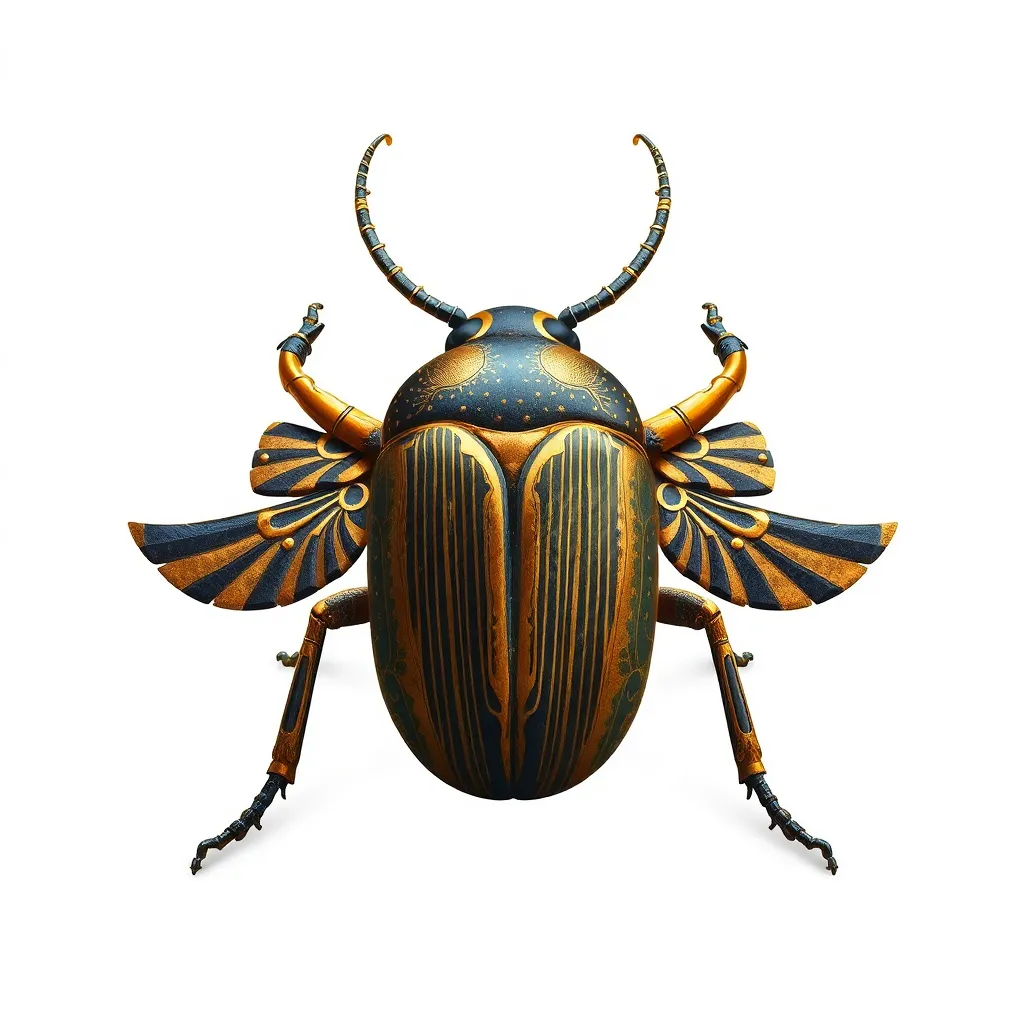The Importance of the Scarab Beetle in Egyptian Mythology
I. Introduction
Egyptian mythology is a rich tapestry of deities, creation myths, and symbols that have captivated the imagination for centuries. Among these symbols, the scarab beetle holds a significant place, representing a multitude of concepts from rebirth to protection. This article aims to explore the multifaceted role of the scarab beetle in ancient Egyptian culture and its lasting impact on both historical and modern interpretations.
II. The Symbolism of the Scarab Beetle
The scarab beetle, or scarabaeus sacer, is more than just an insect in Egyptian mythology; it is a powerful symbol that embodies various aspects of life and death.
A. Representation of Rebirth and Regeneration
One of the primary associations of the scarab beetle is with rebirth and regeneration. The beetle’s behavior of rolling balls of dung, which serve as both food and a place for laying eggs, is seen as a metaphor for the cycle of life. When the young hatch from the dung ball, it symbolically represents new life emerging from decay.
B. Connection to the Sun God Ra
The scarab beetle is closely linked to Ra, the sun god. In Egyptian mythology, Khepri, a form of Ra, is often depicted as a scarab or as a man with a scarab head. Each morning, Khepri rolls the sun across the sky, paralleling the beetle’s behavior of rolling dung.
C. The Scarab as a Symbol of Protection and Transformation
The scarab beetle was also seen as a protector, especially in funerary practices. It symbolized the transformation of the soul and the journey to the afterlife, ensuring safe passage and protection against malevolent forces.
III. The Role of the Scarab in Ancient Egyptian Society
The significance of the scarab beetle extended beyond mythology into the daily lives of ancient Egyptians.
A. Use in Amulets and Jewelry
Scarab amulets were commonly worn for protection and good fortune. These small carvings were often inscribed with prayers or spells to safeguard the wearer.
B. Scarab Imagery in Funerary Practices
In funerary contexts, scarabs were placed with the dead to ensure a safe journey to the afterlife. Tombs frequently contained scarab motifs, emphasizing the importance of rebirth and immortality.
C. The Scarab as a Status Symbol Among the Elite
For the elite, owning scarab jewelry or amulets was a way to display wealth and status. The more elaborate the design, the higher the status of the individual.
IV. The Creation Myth and the Scarab
The scarab beetle plays a pivotal role in Egyptian creation myths, particularly through the figure of Khepri.
A. The Story of Khepri, the God of Creation
Khepri is associated with the dawn and rebirth. As the sun rises each day, Khepri is said to emerge, symbolizing the creation of life itself.
B. The Connection Between the Scarab and the Cycle of Life
The scarab’s life cycle mirrors the Egyptian belief in regeneration, death, and rebirth, emphasizing the eternal nature of existence.
C. Symbolism in the Daily Journey of the Sun
The daily journey of the sun across the sky is paralleled by the scarab’s rolling of dung, representing the continuous cycle of life and the promise of renewal.
V. Scarabs in Art and Architecture
The influence of the scarab beetle is evident in various forms of ancient Egyptian art and architecture.
A. Depictions in Temple Reliefs and Tomb Paintings
Scarab motifs are prevalent in temple reliefs and tomb paintings, often symbolizing protection and the afterlife.
B. Architectural Elements Inspired by Scarab Motifs
Some architectural designs incorporated scarab imagery, particularly in columns and lintels, serving both decorative and symbolic purposes.
C. Scarabs in Sculpture and Artifacts
Numerous artifacts, including sculptures and pottery, feature scarab designs, showcasing the beetle’s importance in daily life and religious practices.
VI. The Scarab in Literature and Texts
The scarab’s significance is also reflected in ancient Egyptian literature and religious texts.
A. References in Ancient Egyptian Religious Texts
Scarab references appear in religious texts, often emphasizing themes of creation, protection, and the afterlife.
B. Scarab Symbolism in Hieroglyphics
In hieroglyphics, the scarab is used as a symbol to denote concepts of rebirth and transformation.
C. Literature Surrounding Creation and the Afterlife
Many texts explore the connections between the scarab, creation myths, and beliefs about the afterlife, illustrating its deep-rooted significance in the cultural consciousness.
VII. The Modern Influence of the Scarab Beetle
The legacy of the scarab beetle extends into contemporary culture, influencing art, design, and symbolism.
A. Scarab Symbolism in Contemporary Culture
Today, the scarab beetle is often regarded as a symbol of luck and protection, frequently found in jewelry and décor.
B. Influence on Modern Art and Design
Many artists incorporate scarab motifs into their work, celebrating its historical significance and aesthetic appeal.
C. The Scarab as a Symbol of Luck and Protection Today
In various cultures, the scarab continues to be seen as a protective talisman, with many believing it brings good fortune and safety.
VIII. Conclusion
In summary, the scarab beetle is a powerful symbol within Egyptian mythology, representing rebirth, protection, and transformation. Its significance is woven into the fabric of ancient Egyptian society, influencing art, literature, and religious practices. The enduring legacy of the scarab continues to resonate in modern culture, highlighting the timeless nature of its symbolism. We invite readers to further explore the fascinating world of Egyptian mythology and the myriad symbols that enrich it.




